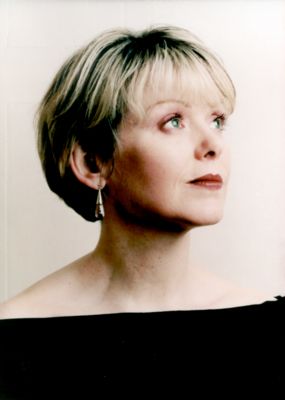|

Refreshing clarity
Paul Goodwin and the Academy of Ancient Music
play Beethoven,
reviewed by MALCOLM MILLER
Beethoven Explored, a concert by the Academy of Ancient Music under the dynamic baton of Associate Conductor Paul Goodwin, was an exciting and memorable experience, and one which opened new ideas and interpretative approaches. Like many period orchestras, the Baroque and Classical emphasis is extended towards the 19th century, and in an artfully presented pre-concert talk, laced with colourful contemporary accounts by players and composers such as Louis Spohr, Paul Goodwin outlined the essential differences between the earlier period and Beethovenian performance practice and instruments. He focused on the new possibilities of articulation and bowing in string instruments, the emphasis of the tip of the bow for staccato, extra penetration in woodwind tone and the balance in favour of wind and brass in the orchestral forces of the time, and it was possible to observe these techniques in practice in the concert that followed, the programme of which reflected a portion of one of Beethoven's first Academie concerts in Vienna.
The AAM were in repsonsive and virtuoso form, led charismatically by Pavlo Beznosiuk, with plenty of commendable solos from the players, enabling the music to come alive with refreshing clarity and bite in the aptly 18th century palacial grandeur and resonance of London's St John's Smith Square, an ideal locus for this period orchestra playing on historic instruments.
This riveting musical journey on 17 February 2005 began with a headlong fling into the Coriolan Overture, in which electrifying tuttis and pregnant silences, driving, insistent motivic textures spiced a reading which was full of élan and risk-taking. The full force of the chromatic harmony was thrilling, as in such details as the cellos' dissonant flattened 6th just before the final cadence. The natural trumpets were brightly penetrating while the flutes and other woodwind resonated above the soft legato strings.
It was followed by Marzelline's first aria 'O wär ich schon mit dir vereint' from Fidelio sung by the lusciously-toned soprano Joan Rodgers, whose appearance in this and an early scena Ah! Perfido Op 65 was certainly a highlight of the evening. Her rich velvety tone blossomed in the fast panting second section of each stanza, with some colourful playing from the orchestra. Beethoven's neo-Mozartian operatic style enthralled in Ah! Perfido, the coloratura sections accomplished with panache after an arresting opening and outpouring of fiery defiance, accompanied by vivid orchestral textures. The main aria flowed with beguiling resonance and great beauty of expression while the orchestration was especially touching in the poignant pizzicato at 'Io d'affano moriro'. The impassioned drama of the final stanza and its contrast with the last line, 'am I not worthy of compassion' evoked Cosí and La Clemenza di Tito, enmeshed with seeds of mature Beethoven.

Joan Rodgers
|
The programme also featured two symphonies, Nos 1 and 8, both classical in different ways. The first symphony buzzed along, the development especially intrepid in its crystalline projection of the initial motif in varied sequences and dialogues between different orchestral sections. The woodwind came across with tender poise in the second subject, passing from one instrument to the other. The second movement's courtly elegance brought out the delicacy of the imitation through its vibrato-less, pastel shading through which every note could be heard. The martial rhythmic section, pointed up by timpani, was particularly engaging and overall there was an operatic tone to this movement leading to a big climax before the decorated reprise of the first theme. The scherzo-esque Minuet, taken at rip roaring speed, sparkled in the fashion of great Beethoven performances of yore, while the final Rondo skipped along with effervescence and breezy delicacy, each reappearance of the rondo theme beautifully elided with the end of the interlude.
The AAM brought exhilarating impetus to the eighth symphony, the first movement abounding with startling tuttis and pungent syncopation. Paul Goodwin, as throughout, elicited much detailed articulation and sustained a high degree of tension and drama throughout, as in the first movement coda, the almost operatic march of the second movement string over woodwind chords, and the measured minuet third movement with its charming trio for two natural horns and clarinet solo, joined later by strings. The buoyant final movement, with its mercurial shifts, offered a weightier climax to a stirring performance that brought us close to the sound of the early 19th century and fully in tune with the character and charisma of Beethoven's genius.
|